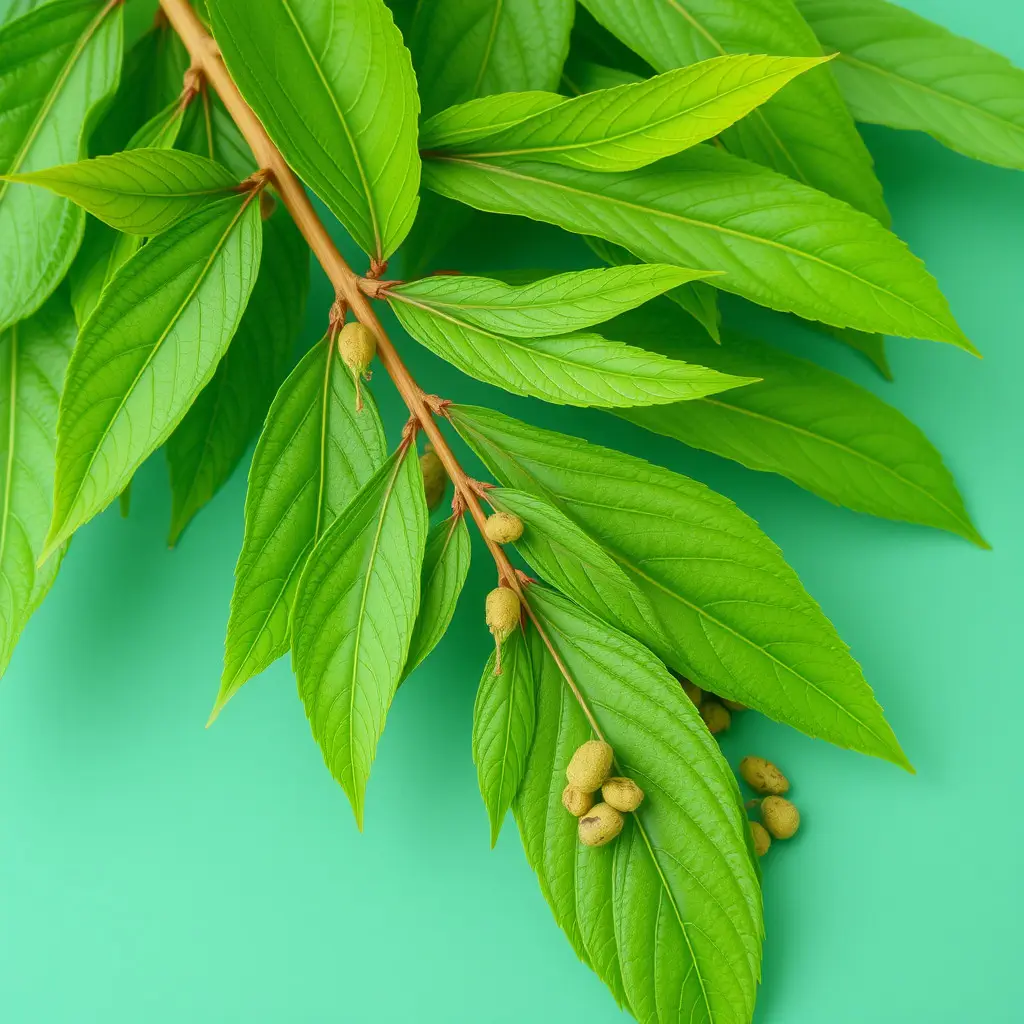Kratom, derived from the Mitragyna speciosa tree, is gaining recognition as a potential natural aid for chronic pain management due to its anti-inflammatory properties. Its active alkaloids, mitragynine and 7-hydroxymitragynine, are believed to provide pain relief by engaging with opioid receptors in the brain, offering an alternative to traditional opioids with less risk of dependency. Clinical studies suggest that these compounds can modulate pain perception and inhibit pro-inflammatory cytokines and enzymes like COX-2 and LOX, reducing inflammation. Users have reported improvements in chronic pain conditions such as fibromyalgia and arthritis, along with an enhanced quality of life. However, it's crucial to consult healthcare professionals before using kratom due to potential drug interactions and individual differences in response. The use of kratom for pain management is complex and should be approached with caution, considering its regulatory status and the need for professional guidance to ensure safe and effective use within a comprehensive chronic pain management strategy.
Exploring the potential of kratom as a natural approach for inflammation reduction and chronic pain management, this article delves into the science behind its active alkaloids. We will uncover how kratom can play a pivotal role in mitigating inflammation and discuss the safety, efficacy, and best practices for its use as a dietary supplement. Join us as we navigate the complexities of kratom’s anti-inflammatory properties, offering insights into how it may serve as a valuable tool in your health regimen.
- Unraveling the Role of Kratom in Mitigating Inflammation and Managing Chronic Pain
- Kratom's Active Alkaloids: A Deep Dive into Their Anti-Inflammatory Properties
- Navigating Kratom Supplement Use for Inflammation Reduction: Safety, Efficacy, and Best Practices
Unraveling the Role of Kratom in Mitigating Inflammation and Managing Chronic Pain

Kratom, a plant from Southeast Asia, has been the subject of growing interest in natural health circles for its potential anti-inflammatory properties and its role in chronic pain management. The alkaloids found within kratom leaves, such as mitragynine and 7-hydroxymitragynine, are thought to be responsible for its analgesic effects, which can help alleviate inflammation and pain without the side effects commonly associated with prescription opioids. Research suggests that these compounds interact with various receptors in the brain, leading to pain relief by modulating neural pathways involved in chronic pain conditions like fibromyalgia or arthritis.
Furthermore, the anti-inflammatory effects of kratom may be attributed to its ability to inhibit the production of pro-inflammatory cytokines and enzymes, such as COX-2 and LOX, which are known to play a role in inflammation. By addressing the root cause of chronic inflammation, kratom could potentially provide long-term pain relief for those suffering from chronic conditions. Users have reported reduced symptoms of inflammation-related pain, improved mobility, and a better quality of life when incorporating kratom into their pain management regimen. As with any supplement or treatment, it is crucial to consult healthcare professionals before integrating kratom into one’s health routine, especially considering the potential for interaction with other medications and individual differences in response to kratom.
Kratom's Active Alkaloids: A Deep Dive into Their Anti-Inflammatory Properties

Mitragyna speciosa, commonly known as kratom, has garnered attention for its potential role in chronic pain management, attributed to its active alkaloids. Among these alkaloids, mitragynine and 7-hydroxymitragynine are of particular interest due to their anti-inflammatory properties. These compounds interact with the body’s opioid receptors, providing analgesic effects that can help alleviate chronic pain without the risk of addiction associated with traditional opioids. The anti-inflammatory action of kratom’s alkaloids is multifaceted, targeting various pathways implicated in inflammation. Research suggests that these compounds can inhibit the production of pro-inflammatory cytokines and enzymes, thereby reducing the immune response responsible for inflammation. This natural approach to pain management offers a promising alternative for individuals seeking relief from chronic pain conditions. Users often report that kratom not only diminishes their pain but also improves their overall sense of well-being, which could be attributed to its complex interaction with the brain and body’s systems. As such, kratom’s alkaloids represent a significant area of interest for those exploring non-traditional methods of managing chronic inflammatory conditions.
Navigating Kratom Supplement Use for Inflammation Reduction: Safety, Efficacy, and Best Practices

Kratom, derived from the leaves of Mitragyna speciosa, has garnered attention in the realm of natural pain management. For individuals experiencing chronic pain, kratom supplements present a compelling alternative to traditional pharmaceuticals. Users often report that specific strains of kratom can help alleviate inflammation and reduce pain, potentially offering relief where other methods have fallen short. The efficacy of kratom for inflammation reduction is an area of ongoing research, with preliminary studies suggesting its potential as a natural anti-inflammatory agent. Its active compounds, including mitragynine and 7-hydroxymitragynine, are believed to interact with the body’s opioid receptors, which may explain its analgesic effects.
When considering kratom supplement use for inflammation reduction, safety and best practices are paramount. It is crucial to approach its use with a well-informed perspective, as the FDA has not approved kratom as a treatment for any medical condition. Users should start with low doses to gauge their individual response, adhering to recommended guidelines to avoid potential side effects or adverse reactions. Additionally, it’s important to consult with a healthcare provider before integrating kratom into one’s health regimen, especially if the individual is taking other medications or has underlying health conditions. Best practices for kratom use include strict adherence to dosing guidelines, sourcing high-quality products from reputable vendors, and regularly monitoring the effects on both physical and mental well-being. This cautious and informed approach can help ensure a safe experience while exploring kratom’s potential benefits for chronic pain management and inflammation reduction.
Kratom’s potential in addressing inflammation and managing chronic pain has been a subject of growing interest. The exploration into its active alkaloids, as detailed in the article, reveals promising anti-inflammatory properties that could offer a natural avenue for relief. However, it is imperative to approach kratom supplement use with caution, considering safety and efficacy parameters. By adhering to best practices and remaining informed on the latest research, individuals may find kratom to be a valuable addition to chronic pain management strategies. As the body of evidence continues to expand, so too does the understanding of how this natural substance can be harnessed to combat inflammation and alleviate persistent discomfort.






